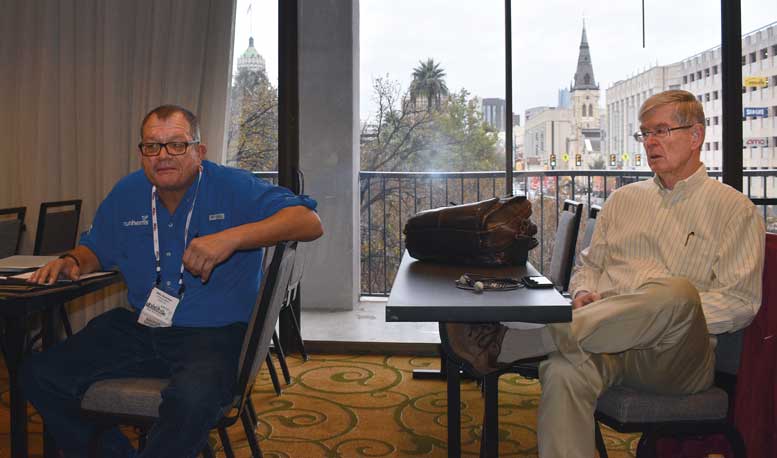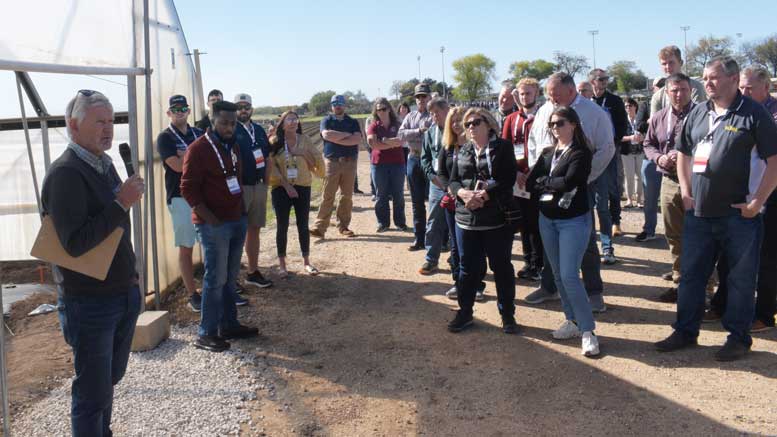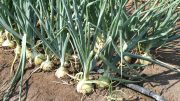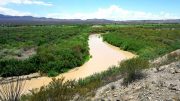|
Click to listen to this article
|
FDA Talks Mexico in San Antonio
Story and photos by Dave Alexander, Publisher

The National Onion Association (NOA) Annual Convention, held in San Antonio, Texas, Nov. 29 – Dec. 1, also included attendees from the National Allium Research Conference (NARC). When NOA and NARC hold a combined convention, it’s always a busy time. Attendance more than doubles at these conferences. This time around, NARC presented 25 break-out sessions and 15 research posters. The sessions, many of them standing-room only, featured a wide variety of topics. Disease and pest management, variety breeding and production were all on the agenda.
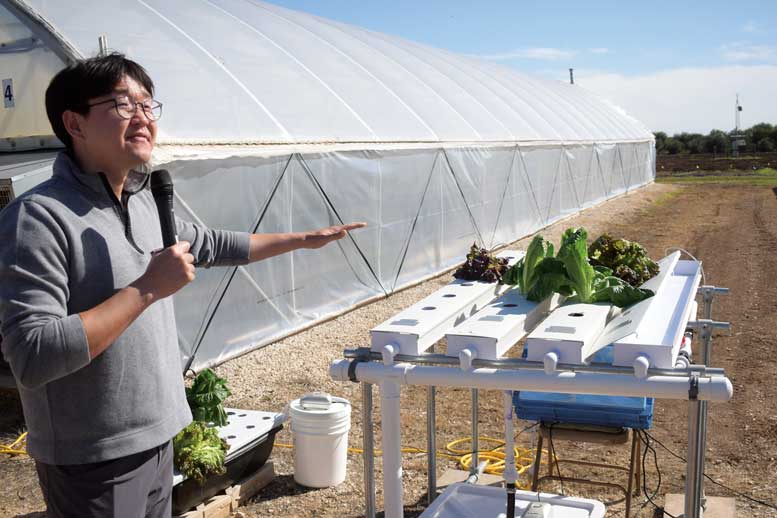
The NOA portion of the convention contained committee meetings, the general session, a field day, a banquet and crop reports. One of the featured speakers of the general session, Kurt Nolte, a biologist and outbreak investigation specialist with the FDA, talked about food safety concerns with Mexican onion imports.
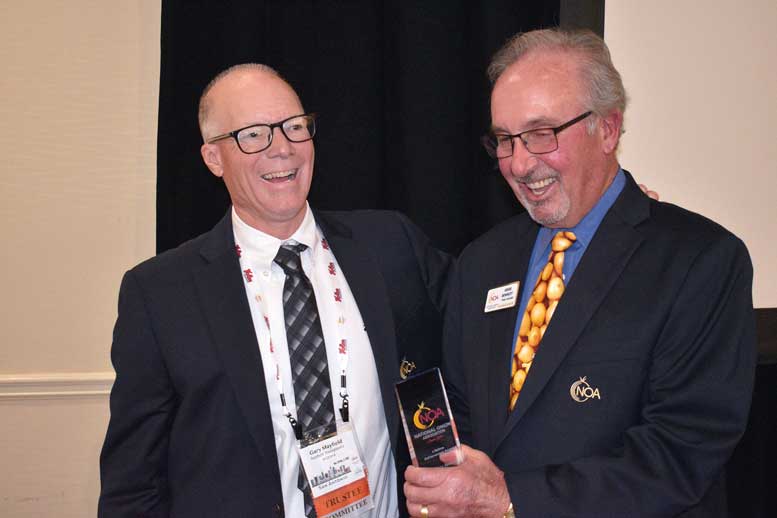
FDA + SENASICA + COFEPRIS = FSP
If you thought that only the U.S. government spoons alphabet soup in the form of acronyms, you’d be wrong. In Mexico, SENASICA deals with agronomic health, safety and quality. COFEPRIS protects against sanitary risk. The U.S. FDA partnered with SENASICA and COFEPRIS in September 2020 and created the joint venture Food Safety Partnership (FSP) to “protect public health through the prevention of foodborne diseases in human foods.”
In turned out the timing of this partnership was fortuitous, as over 1,000 U.S. illnesses were reported stemming from Salmonella in onions imported from Chihuahua, Mexico, in the summer of 2021. The FSP conducted inspections in Mexico, and information was obtained about specific farms that were associated with the 2021 outbreak.
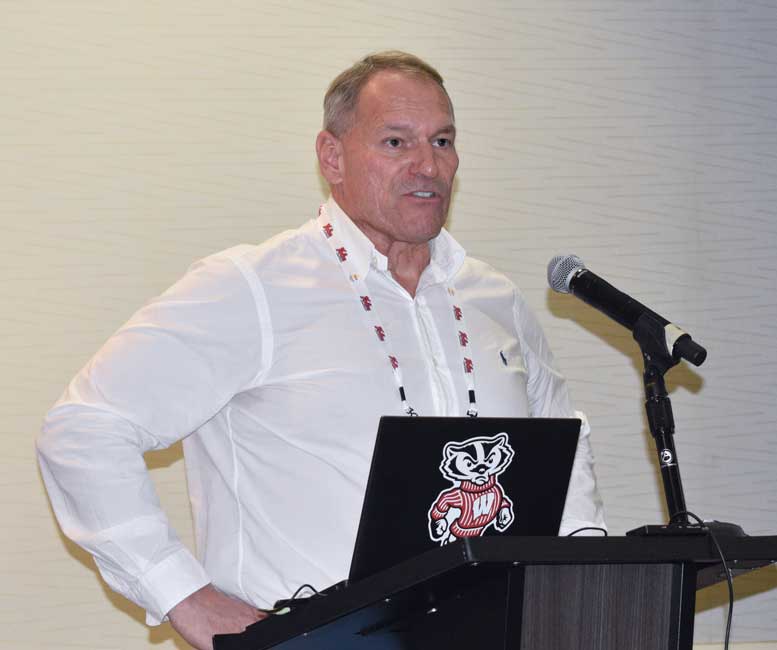
FSP in Action
In March 2023, FSP met in Chihuahua. At this meeting, FSP communicated a unified message on the importance of food safety and of using the NOA/International Fresh Produce Association (IFPA) Safety Guidelines for the Dry Bulb Onion Supply Chain best practices guidance document. The guidelines were translated into Spanish and distributed throughout Mexico to growers.
“This particular document is a well-rounded, good foundation for starting food safety programs in the state of Mexico,” Nolte said.
However, it was discovered at the meeting that production practices in Chihuahua are not the same as U.S. methods. Nolte wants to see the NOA/IFPA guidelines updated to include Mexican-specific procedures.
At the meeting, the SENASICA arm of FSP committed to increase the number of farms participating in a program to reduce contamination risks, and to continue to perform targeted inspections of onion growers in Chihuahua and throughout Mexico. In addition, COFEPRIS pledged to increase the number of inspections being conducted at onion packing houses.
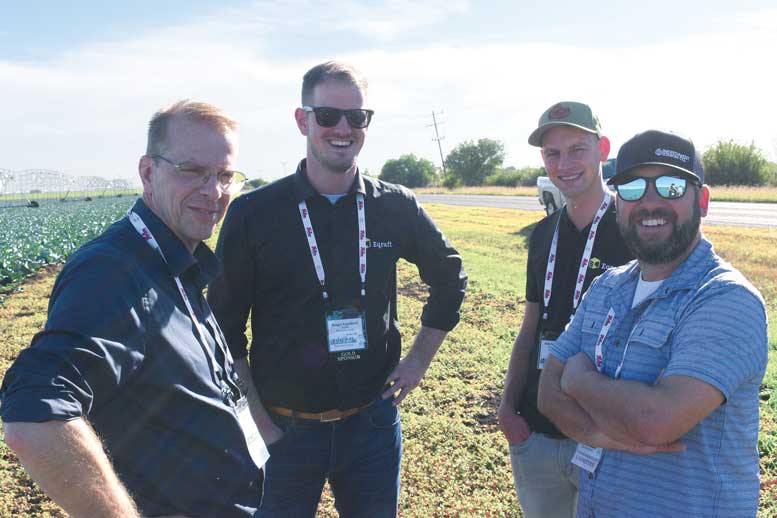
At the Border
The FDA has initiated an increase in the use of the Foreign Supplier Verification Program (FSVP), which conducts inspections on onion importers that bring product into the U.S.
Also, as a result of the 2021 Chihuahua outbreak, the FDA instituted an “Import Bulletin,” conducting random increased sampling and screening for onion pathogens from product that originated from the Chihuahua growing region. This program has ended, however, and no mention was made of if or when it might be reinstituted.
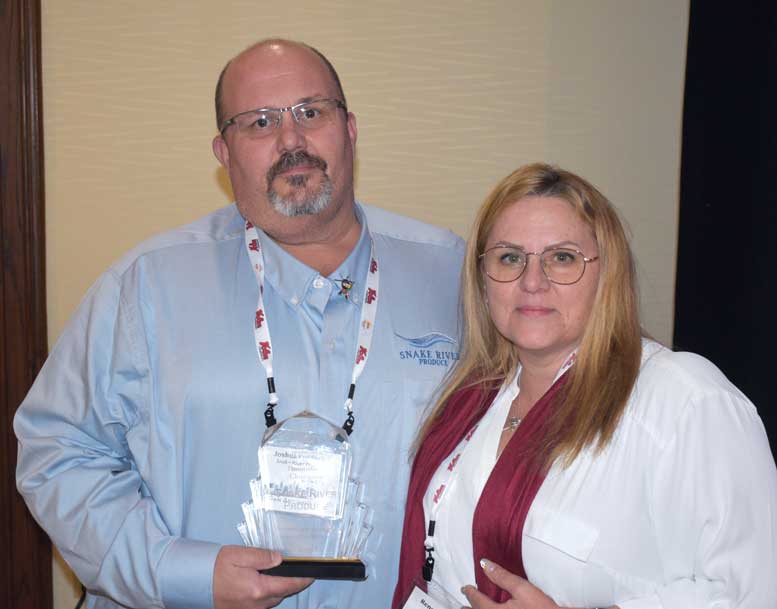
2024 and Beyond
There is not an association specifically for onion growers in Mexico. This makes getting notifications (like upcoming training) to growers slow and cumbersome. The FDA is focused on preventing outbreaks instead of responding to them, so increased grower safety training is imperative to this ideal. An onion grower association would also be beneficial for training and hopefully will be put in place soon.
Future FDA plans include an “Import Alert” system. The alert would stop transportation of contaminated onions to the U.S. when there is enough evidence to indicate that a specific shipper is at fault.
